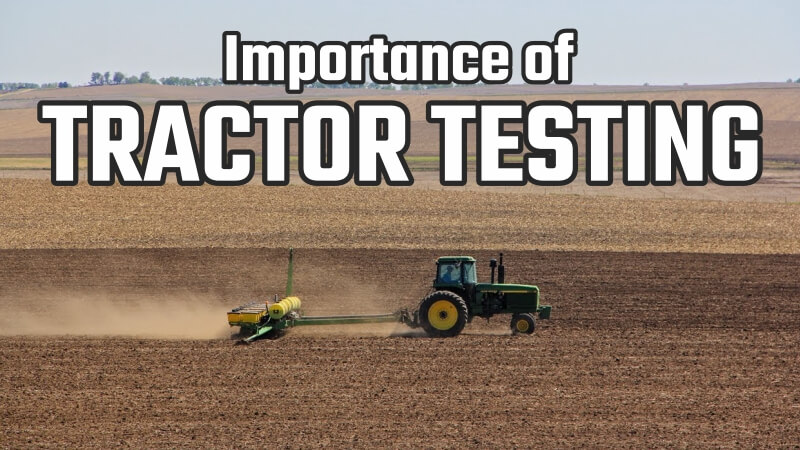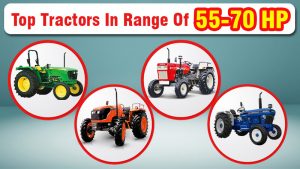With the exception of established producers of tractors, agricultural machinery is primarily produced by small firms. The only way to ensure that agricultural equipment manufacturers are clear about the performance and durability of their products for proper/efficient use, as well as making technical information available to farmers for proper selection of the required equipment, is to test agricultural machinery, including tractors named as ” Tractor Testing”
Tractor testing is the investigation of a machine’s behavior in comparison to rules or norms that are ideal and reproducible. On the other hand, evaluation entails assessing performance in real-world situations. Measurement, variation, and computation of numerous indicators in accordance with standards established by a recognized institution are all part of testing.
A key factor in the wise choice is the testing of farm equipment using a standard set-out technique. Tests are a crucial tool for not only evaluating a piece of equipment but also for ensuring that the necessary level of quality is maintained throughout the production process.
What is Tractor Testing?
The main goal of tractor testing is to provide buyers with information about the tractor’s performance and power output. General identification and description of the tractor and its typical attachments would be provided by the test.
Tractor tests enable the generation of performance data with accuracy and objectivity, and doing so necessitates the use of standardized processes that are widely acknowledged and accepted by the scientific community.
Tractor and agricultural machinery performance testing is often carried out by manufacturers, government agencies, research institutes (such as universities), and duly accredited specialized facilities.
Testing tractors and machines are primarily done to gather information on the performance of the engines, transmissions, traction systems, protective structures, ergonomics, and energy efficiency.
Tractor Testing Preparation:
1. Sampling
The tractor is chosen at random from the production line in accordance with the testing station’s instructions, complete with all of its customary extras and in saleable condition.
2. Starting-Up and Initial Adjustment:
- The tractor needs to be brand-new and has been tested by the manufacturer.
- The test report needs to include the running-in location and time.
- While the tractor is being prepared for testing, the manufacturer may make modifications to the governor, ignition, and injection systems.
3. Ballasted Tractor:
It is possible to install wheel equipment and ballast weights that are commercially available and have been certified for use in agriculture by the manufacturer.
4. Specifications List:
The tractor’s specifications should be provided by the manufacturer. The testing facility should confirm these criteria, and the results should be reported.
5. Fixes and Modifications During Tests:
It is important to document any repairs or modifications made during the test.
6. Lubricants and fuels:
Choose fuels and lubricants from a variety of commercially accessible goods.
7. Other Modifications:
- The tractor should be parked on a solid, horizontal surface with the steering wheels in a position that allows the tractor to proceed in a straight line in order to measure the length, breadth, and other parameters.
- For field work, pneumatic tire pressure should be adjusted to the level advised by the tractor’s manufacturer.
Types of Tests in Testing Centers:
There are main two types of testing:
- Essential Test
- Optional Test
1. Essential Test: This test includes various types of tests:
- Engine test
- Drawbar test
- Centre of gravity
- Main power take-off test
- Belt or pulley shaft test
- Visibility for the driver’s seat
- Turning space
- Turning circle
- Hydraulic power lift
- Brake test and
- Air cleaner oil pull-over test
2. Optional Test:
Noise measurement and a few unique tests are optional tests.
Importance of Tractor Testing:
Testing a machine includes conducting the test under a variety of settings both in the lab and in the field in order to systematically determine its functional performance, structural strength, durability, power requirements, and capacity. All parties, including producers, buyers/farmers, exporters, and export inspection authorities, can benefit from testing.
It is necessary to evaluate these new machines to maximize their operational efficacy because large tractors with high operational capacity, which can be autonomous or even electric, show the development of alternative techniques for futuristic agricultural practices.
How testing is beneficial for farmers?
- Agreement with Indian norms at the national level by an independent technical organization.
- Aids in selecting a generic product
- Free replacement of standard-marked products in the event that their quality is judged to be below par
- Safety from fraud and exploitation
- Guaranteed safety from life-threatening situations and competent care
- Understanding the relative performance of similar types of machinery can assist the user in selecting the most cost-effective machine for his needs.
Testing for traction in agricultural fields:
There are no specific criteria for field tests due to environmental variability and the difficulty in limiting the sources of variation in results. However, the OECD has a method for conducting tests in actual field settings. A thorough description of each procedure, piece of technology, and component of the test are required as a key stage to guarantee the dependability and comparability of the results acquired in field tests.
Beginning with a specific understanding of the soil type, beginning soil conditions, the equipment to be towed, the required travel speed, and the size of the plot where the assembly will be used, the field test should be conducted.
The load cell of the tractor, the apparatus for calculating tractive force, fuel consumption meters, tachometers mounted on the wheels, and engine speed sensors are just a few examples of the instruments used to collect data during standardized tests. All of these instruments should be compatible with the operational circumstances and thoroughly described.
The following four Farm Machinery Training & Testing Institutes have been established by the government:
1) Central Farm Machinery Training & Testing Institute (Madhya Pradesh)
2) Northern Region Farm Machinery Training & Testing Institute (Haryana)
3) Southern Region Farm Machinery Training & Testing Institute, (Andhra Pradesh)
4) North Eastern Region Farm Machinery Training & Testing Institute, (Assam).
To get the latest updates on the tractor, tractor price, and tractor news install the KhetiGaadi application.




